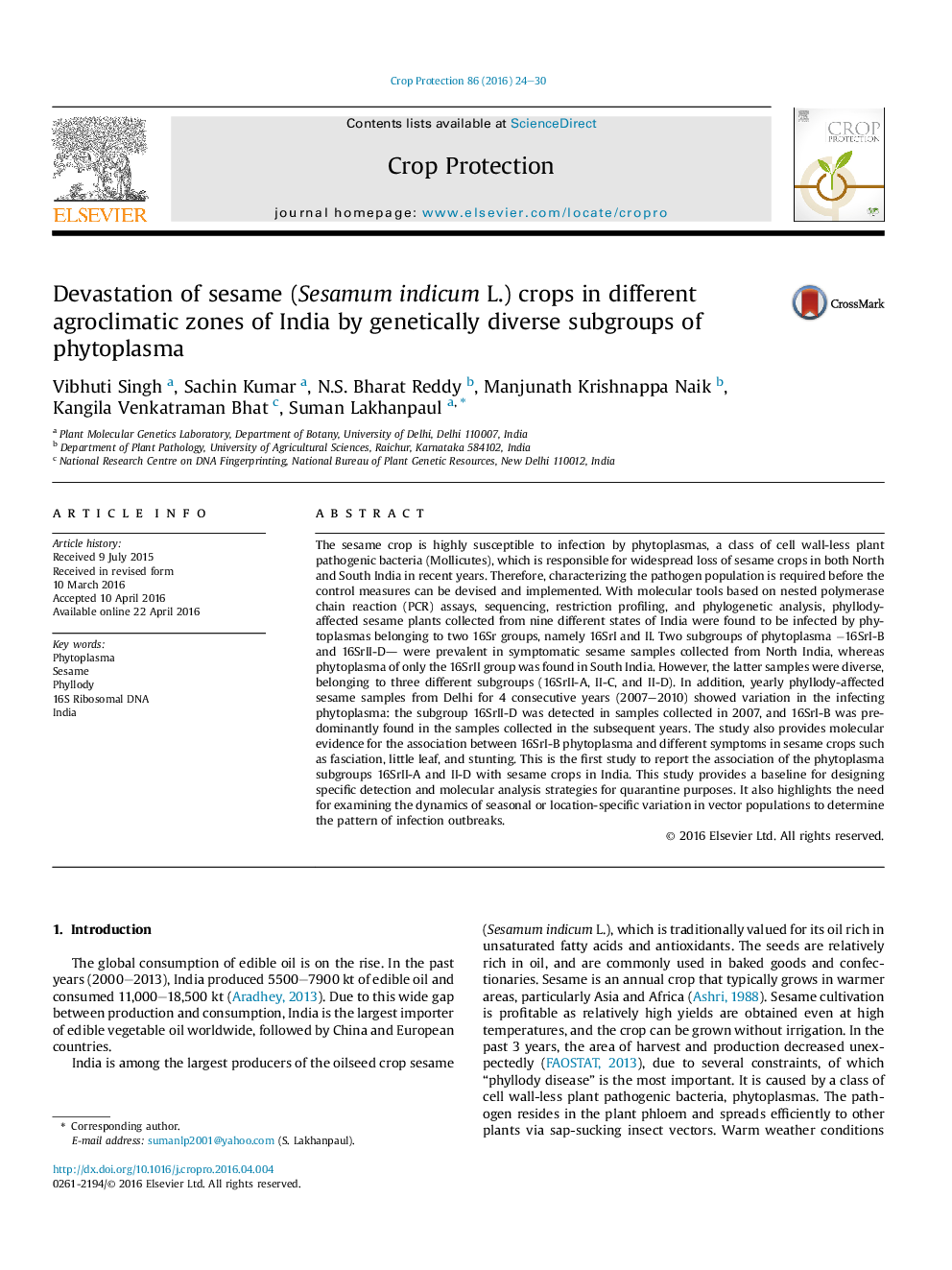| کد مقاله | کد نشریه | سال انتشار | مقاله انگلیسی | نسخه تمام متن |
|---|---|---|---|---|
| 6373327 | 1624301 | 2016 | 7 صفحه PDF | دانلود رایگان |

- Group 16SrI-B phytoplasma dominates sesame phyllody collections from North India while 16SrII-D also detected.
- In south India, group 16SrII phytoplasma is associated with sesame phyllody including three sub-groups; II-A, C and D.
- Yearly variation in phytoplasma affecting sesame in Delhi -16SrII-D present initially (2007) and 16SrI-B in later years.
- The correlation of the phytoplasma subgroups 16SrII-A and II-D with sesame phyllody in India is reported for the first time.
- Evidence for the association of 16SrI-B phytoplasma with symptoms other than phyllody such as little leaf, stunting, and fasciation in sesame was presented.
The sesame crop is highly susceptible to infection by phytoplasmas, a class of cell wall-less plant pathogenic bacteria (Mollicutes), which is responsible for widespread loss of sesame crops in both North and South India in recent years. Therefore, characterizing the pathogen population is required before the control measures can be devised and implemented. With molecular tools based on nested polymerase chain reaction (PCR) assays, sequencing, restriction profiling, and phylogenetic analysis, phyllody-affected sesame plants collected from nine different states of India were found to be infected by phytoplasmas belonging to two 16Sr groups, namely 16SrI and II. Two subgroups of phytoplasma â16SrI-B and 16SrII-D- were prevalent in symptomatic sesame samples collected from North India, whereas phytoplasma of only the 16SrII group was found in South India. However, the latter samples were diverse, belonging to three different subgroups (16SrII-A, II-C, and II-D). In addition, yearly phyllody-affected sesame samples from Delhi for 4 consecutive years (2007-2010) showed variation in the infecting phytoplasma: the subgroup 16SrII-D was detected in samples collected in 2007, and 16SrI-B was predominantly found in the samples collected in the subsequent years. The study also provides molecular evidence for the association between 16SrI-B phytoplasma and different symptoms in sesame crops such as fasciation, little leaf, and stunting. This is the first study to report the association of the phytoplasma subgroups 16SrII-A and II-D with sesame crops in India. This study provides a baseline for designing specific detection and molecular analysis strategies for quarantine purposes. It also highlights the need for examining the dynamics of seasonal or location-specific variation in vector populations to determine the pattern of infection outbreaks.
Journal: Crop Protection - Volume 86, August 2016, Pages 24-30